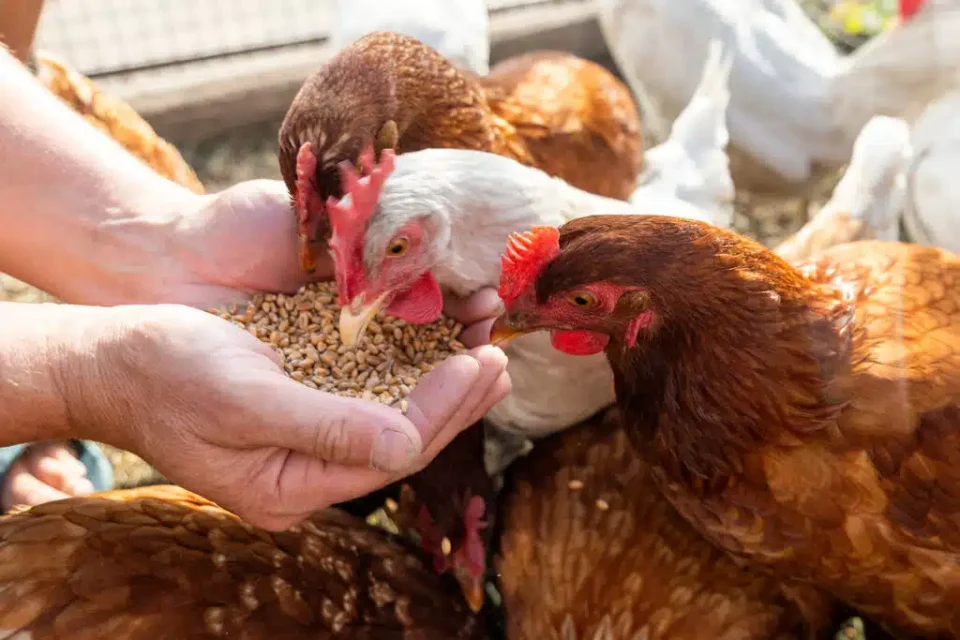Plant-based feed additives are the key element in sustainable livestock production. Why? Because they can be used in a wide range of applications, their use is safe for humans, animals and the environment, they do not promote resistances and no withdrawal periods need to be observed. One area where the benefits of the right additive are particularly evident is endotoxin management.
Anta®Catch: comprehensive solution to the endotoxin problem
Endotoxins cause considerable damage in livestock farming every year. Worldwide, the economic damage caused by high levels of endotoxin contamination leads to substantial economic losses each year. This affects all areas of production, not only dairy cattle and beef cattle farms, but also pig and poultry fattening, egg production and aquaculture. But what are endotoxins and why can they cause such damage?
What exactly are endotoxins and what makes them so dangerous?
Endotoxins are components of the outer cell membrane of gram-negative bacteria such as Escherichia coli, Salmonella, Shigella and cyanobacteria. They are released, among other things, when the bacteria die and decompose. Endotoxins occur naturally in the intestines of both humans and animals, as the microbiota also contains gram-negative bacteria. As long as their concentration does not become too high, the body can cope with them: This is where the liver becomes active with its detoxifying function.
However, it becomes critical when the endotoxin level rises too high and the liver can no longer cope. The toxins can then lead to fever, inflammation, diarrhoea, circulatory problems, septic shock or even death. They also hinder the absorption of nutrients in the intestine. Our farm animals are affected by endotoxins to varying degrees: While chickens tolerate somewhat higher endotoxin levels, ruminants and pigs react with claw inflammation, ear or tail necrosis even at lower levels.
What are the reasons for high endotoxin levels?
Reasons for high endotoxin levels can include stress such as high temperatures, birth or rehousing, but can also be a result of antibiotic treatment following illness or a high proportion of concentrated feed in the animals’ diet. As these factors can never be completely ruled out in modern animal husbandry, even under optimal conditions, endotoxins occur even on very well-managed farms.
It is often not easy for livestock farmers to recognise endotoxin contamination in their animals. Endotoxin levels cannot be measured on the farm. The harmful effects of toxins can be seen in an increase in infections and diarrhoea, in circulatory disorders and necrosis, in animals suffering from pain, in poor growth and poorer product quality. However, it is often not recognised that the cause of all this is endotoxins. It is also often wrongly assumed that mycotoxin binders can also protect against the consequences of endotoxins. However, this is not correct. . Chemically and biologically, the two are completely different molecules, which is why a single solution cannot be expected to have same level of effectiveness against both problem.
Animal owners face three problems with endotoxins: Their animals are sick and need treatment, their sick animals cannot perform to their full potential – milk, eggs, meat – and also cannot utilise the feed optimally. Endotoxins are therefore a serious health problem for our livestock on the one hand and a considerable waste of resources on the other. Combating endotoxins in livestock is therefore a crucial part of animal-friendly and sustainable food production.
How can we protect our animals and business against endotoxin damage?
This requires several steps: Firstly, endotoxins must be bound in the intestine and inactivated here so that they can cause as little damage as possible. Secondly, the intestinal barrier and thus the health of the animals must be strengthened. And thirdly, the liver needs to be supported in order to promote detoxification and reduce inflammatory reactions.
Anta®Catch is the first product that truly takes a holistic approach and thus promises a comprehensive solution to the endotoxin problem. At the same time, it is the only product to date that has been specifically developed and optimised for binding endotoxins. Anta®Catch consists of purely natural ingredients and is currently distributed in Europe, Asia and Latin America.
Safeguarding our animals and ensuring sustainable food production requires a proactive approach. Anta®Catch emerges as a game-changer, offering a holistic solution to combat endotoxins. By embracing such innovations, we not only protect our livestock but also contribute to a healthier, more efficient, and eco-friendly agricultural future.



